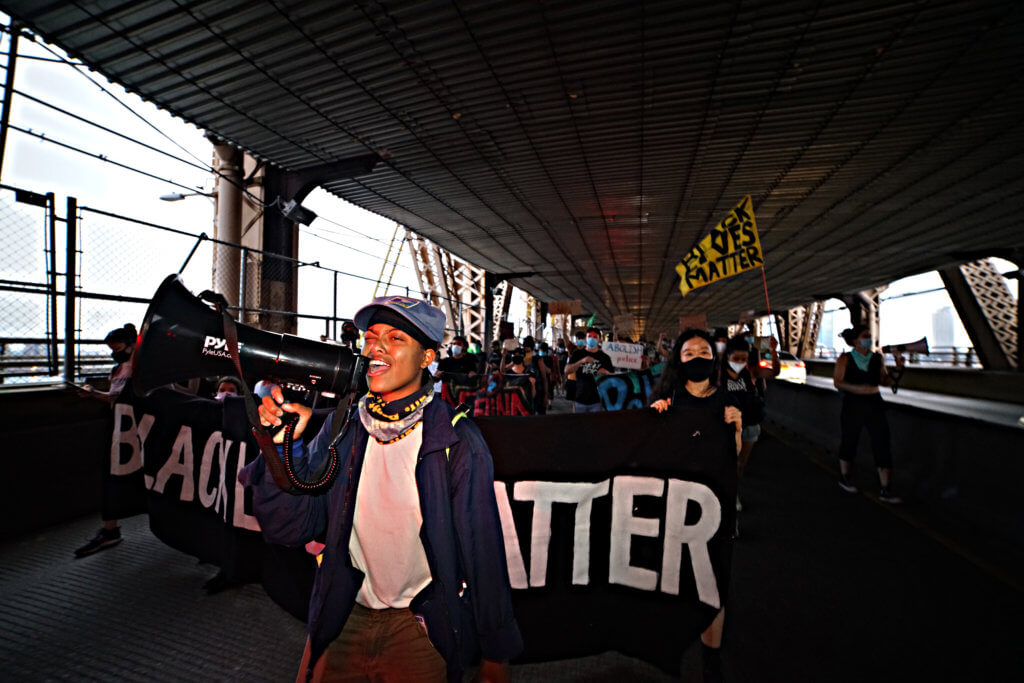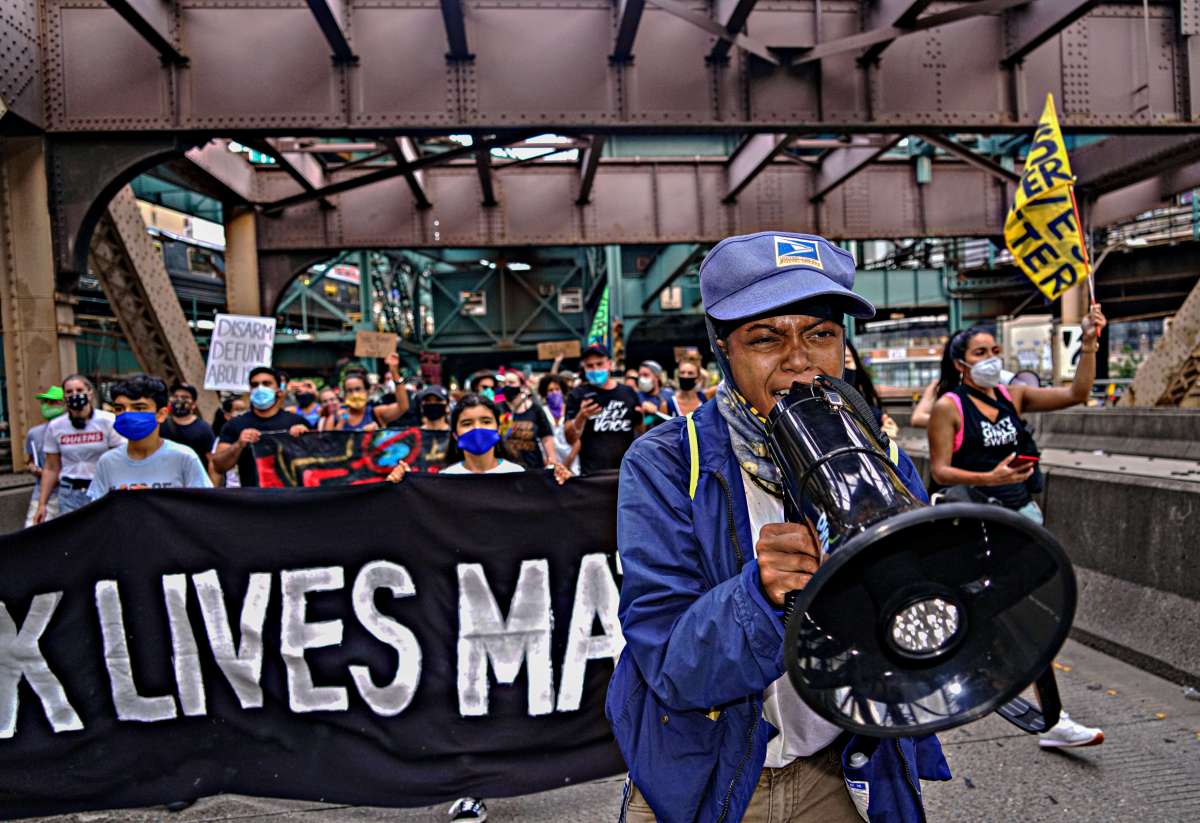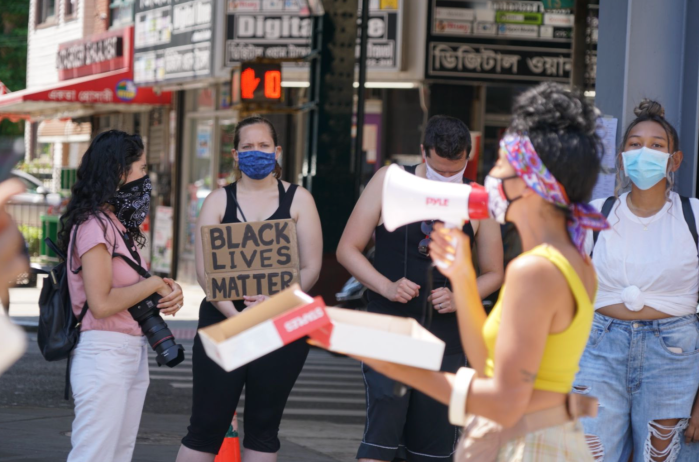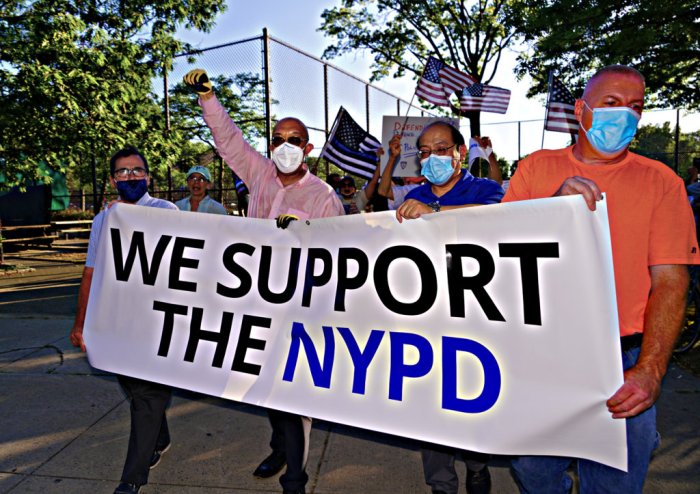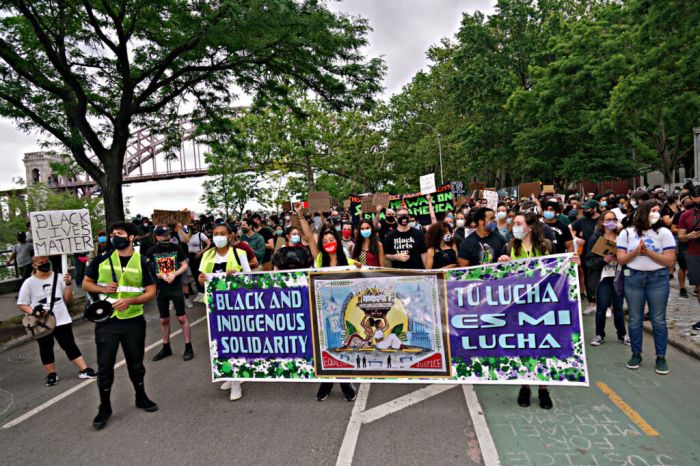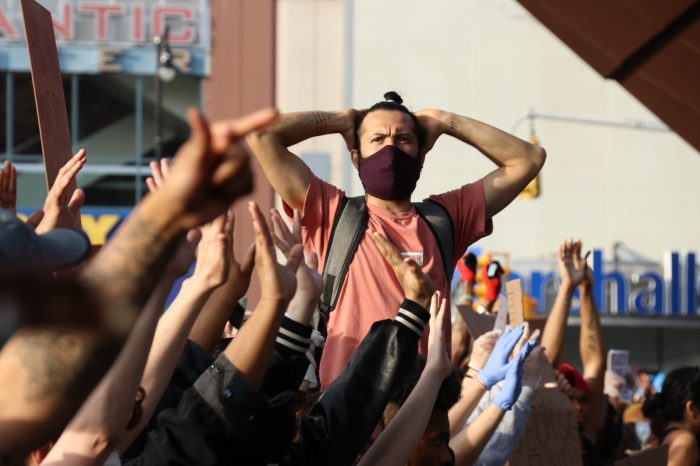During the summer of protests amid the raging COVID-19 pandemic spurred by the shocking police death of Minneapolis’ George Floyd, Trasonia Abbott became one of the many leaders of marches for justice across the city.
As one of the founding members of the Queens Liberation Project, Abbott helped lead several protests through Queens and Manhattan over the course of the year — from occupying the Queensboro Bridge to guiding marchers in counter protests against Blue Lives Matter rallies. One could find Abbott at the forefront with a megaphone in hand, with a rallying cry bursting from their lips.
Abbott, born a Black female, identifies as a non-binary person who has, in their own words, been radicalized into the movement through racism. Growing up in Richmond, Virginia, they would often hear racist terms that only became exacerbated following the election of former President Barack Obama.
After originally planning to join the military, Abbott instead moved to New York City in 2015 where they believed there would be more liberal thinkers. Instead, Abbott says they faced more racism while studying at Pratt University. It was here the journey to the summer of 2020 began.
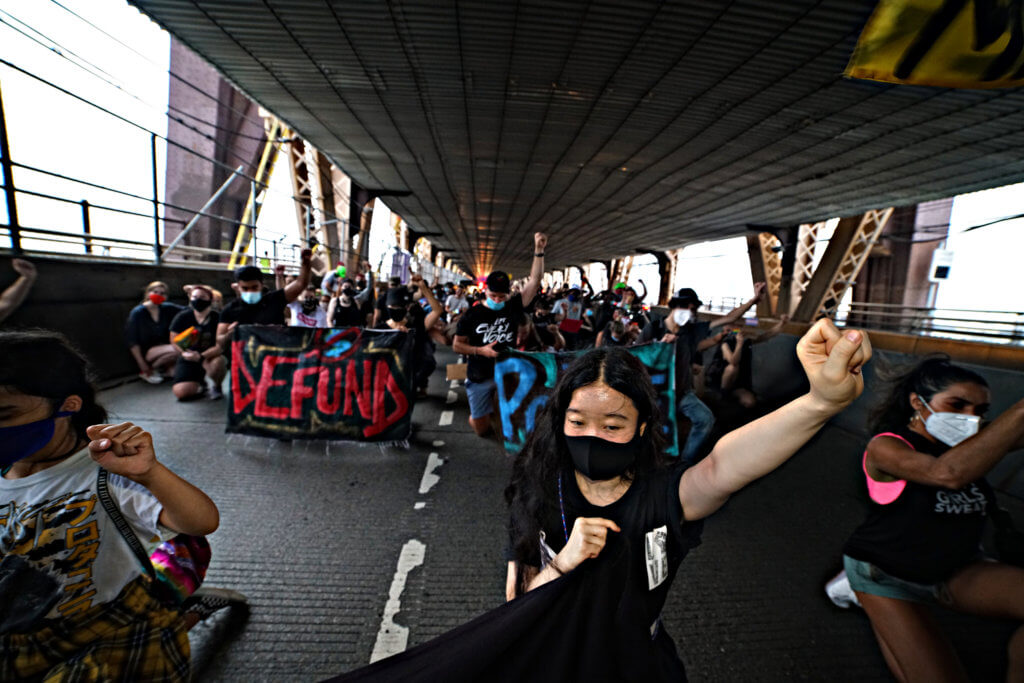
“Higher education really demoralized me. I have been dealing with this kind of racism my whole life. When I decided I am not going to go into the military, I am going to go to college in New York, I naively thought I was going to escape north and everybody is going to be liberal and they are going to get it,” Abbott said.
Abbott became a leading member of their school’s Black Lives Matter group, where they hoped to connect with more black students who they say were hard to find at the time. With prejudice following Abbott from state to state, they had participated in some large-scale protests such as the Women’s march.
But it was the death of Breonna Taylor — the Kentucky EMT fatally shot by police during a raid — that made the biggest difference in Abbott’s life.
“I was more affected by the death of Breonna Taylor and Atatiana Jefferson because those were two Black women who were killed in their homes for doing nothing. That scared the s#*t out of me. The idea that you could be in your home sleeping and they can still just come in and kill you just struck fear in me,” Abbott said.
Along with the death of George Floyd, these killings propelled Abbott to the New York City streets along with thousands of others. Here they met other like-minded individuals who gathered together to form a protest organization named Justice for George Queens, which soon morphed into the Queens Liberation Project.
Although Abbott stresses that the organization prides themselves on having no single leader, Abbott was the guiding figure propelling, at times, hundreds of people through parks, over bridges, and to the doorsteps of police precincts.
Still, despite Abbott’s demeanor, deep down they admit they were pushing through unbridled fear throughout the entire summer.
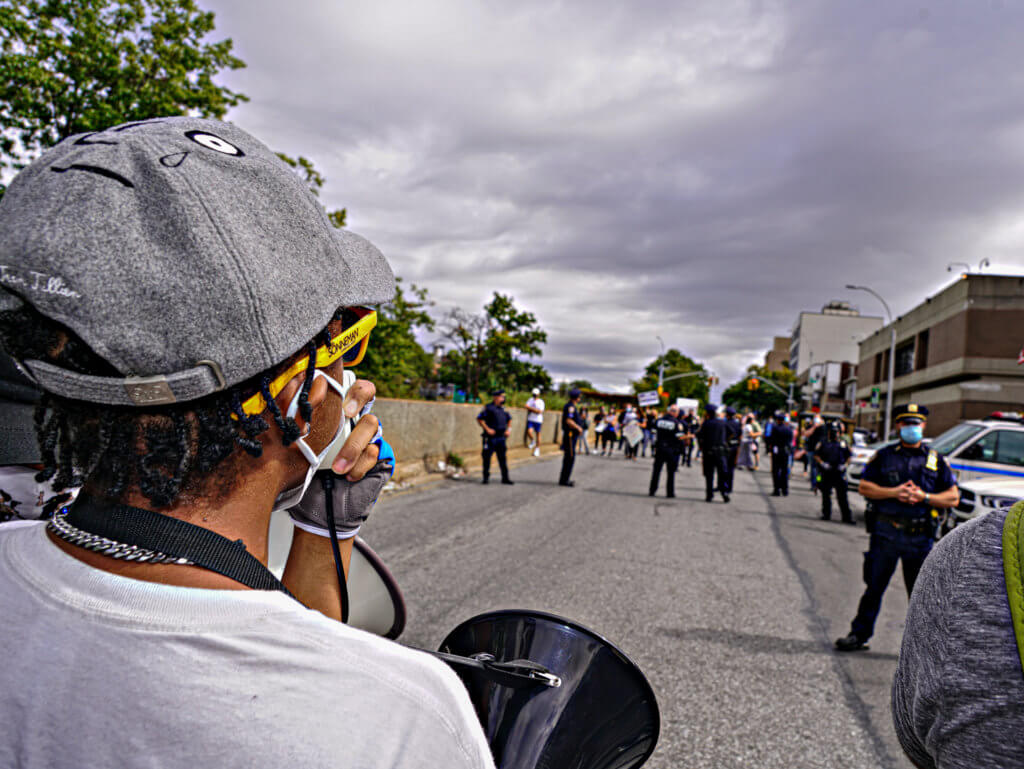
“I was extremely paranoid every time we did a protest. I was really in the mindset that I am going to die. But I felt pulled in a way I couldn’t explain because I really didn’t want to go outside,” Abbott explained. “I was very anxious and very scared, I would lock my door and put the bolt on it at night because I believed the cops were going to break in and shoot me in my sleep. Looking back, that wasn’t going to happen, I don’t think it was grounded in reality it was just everything I saw — all of the violence and I was like anything could happen.”
Abbott fought through the fear and led some of Queens and Manhattan’s most well-attended rallies. The racial injustice Abbott experienced from a young age motivated them to not only keep returning to streets in the face of believing that death could be the end result each and every day. However, as the summer grew to winter, Abbott began feeling somewhat disenfranchised by the act of protesting.
As the months wore on, Abbott says it became clear more and more individuals were hoping on a bandwagon than fighting for the survival of black lives.
While many of what Abbott calls “well-meaning white people” had good intentions, it was hard to stomach their presence.
Since Abbott believed this was a fight for survival that could end with beatings and death at any day or time, when white men and women began bringing their children and pets to rallies, it left Abbott with pressure to keep them safe, along with the realization that they simply did not understand the severity of the situation.
“When we took over the [Queensboro] Bridge for the second time [on Aug. 28], this woman brought her young children, I told her to keep them behind me. In my mind, I needed to make sure these kids get home safe without getting traumatized. It was the one time I went against my best wishes and appealed to the police and I was like, ‘We are a peaceful protest.’ I really didn’t want to use those words, but I went against my wishes and I used those words because we had kids there,” Abbott said.
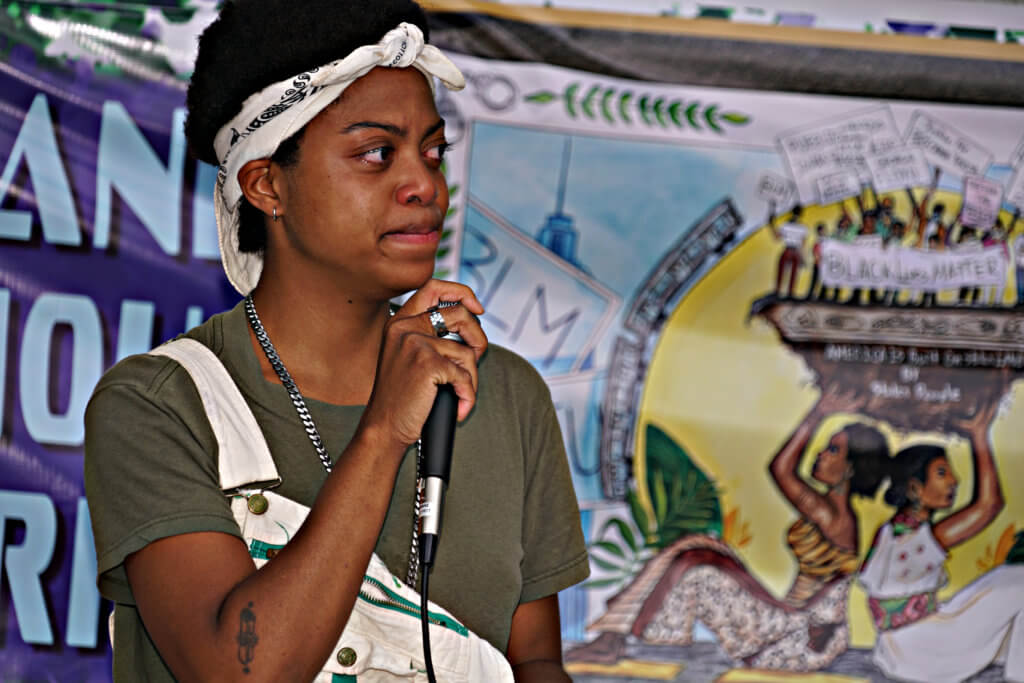
Abbott’s passion for protesting further deteriorated when some demonstration organizer’s self-importance obscured the reasons for marching through the streets. This came to a head during a protest on Sept. 24, 2020 after a grand jury in Kentucky declined to prosecute the police officers involved in Taylor’s death on murder charges.
“I was very upset that Breonna Taylor’s killers were going to get away with murdering her. While we were protesting, I kept getting pushed back from other organizers, being told that I am not an organizer. Then while that is going on there were some guys using the protest as cover to mess up already messed up neighborhoods. I hated that,” Abbott said of that final protest. “I was like ‘Yo, can you stop.’ They told me to stop peace policing. They were white people using Black people as shields so they can commit acts of violence against Black neighborhoods. They were not doing it in the Financial District, they were waiting to be in areas that were already messed up and then tipping over trash cans. And the thing is I then watched Black people pick up those trash cans and put the trash back in it. I hated it and I was like I am not going to another one of these things.”
Although Abbott has not protested on the street since that night, the Queens Liberation Project has shifted gears to help combat food insecurity.
The organization began hosting food drives and “Vegan Fridays” where Abbott and their team distribute over 100 meals every week to those in need in the Queens Bridge community alongside the People’s Bodega—an activist group who supplied food and water for protesters throughout the summer.
Once the Queens Liberation Project learned that Astoria Houses lost access to their gas supply in October, they started distributing 200 meals weekly. Feeding the hungry has become a passion of Abbott’s, one they will be focusing on going forward.
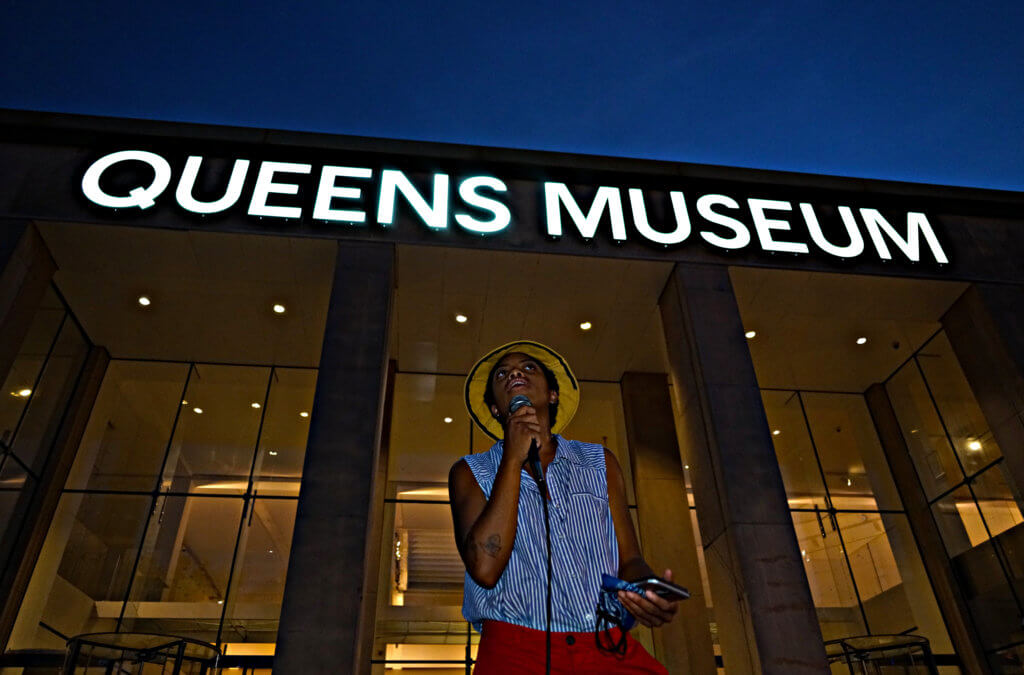
“That’s the kind of thing that means something to me. I want to focus on mutual aid. The necessity of building community with each other is what is going to free us from the shackles of the American government,” Abbott said.
The Queens Liberation Project is currently working on expanding their food outreach programs by engaging in what they call “night rides.” Through this process they will be traveling around Queens during the night feeding homeless and low-income individuals while also distributing hygiene kits and warm clothing.
The Queens Liberation Project is continuing to seek resources in order to continue their work, to find out how you can help, visit The Queens Liberation Project on Instagram. Abbott also hosts a podcast named, Identity Crisis with Pam and Tresonia where Abbott and their partner discuss Queer issues.
